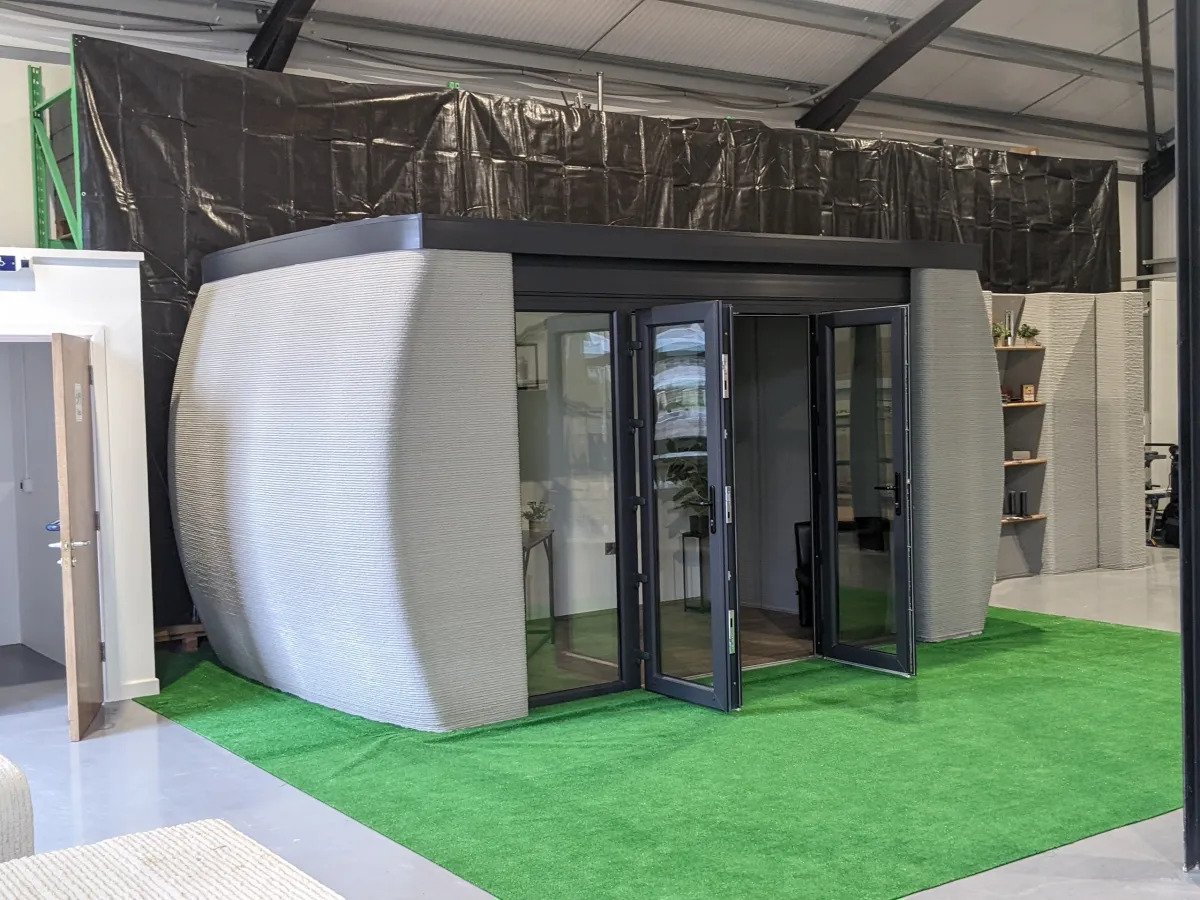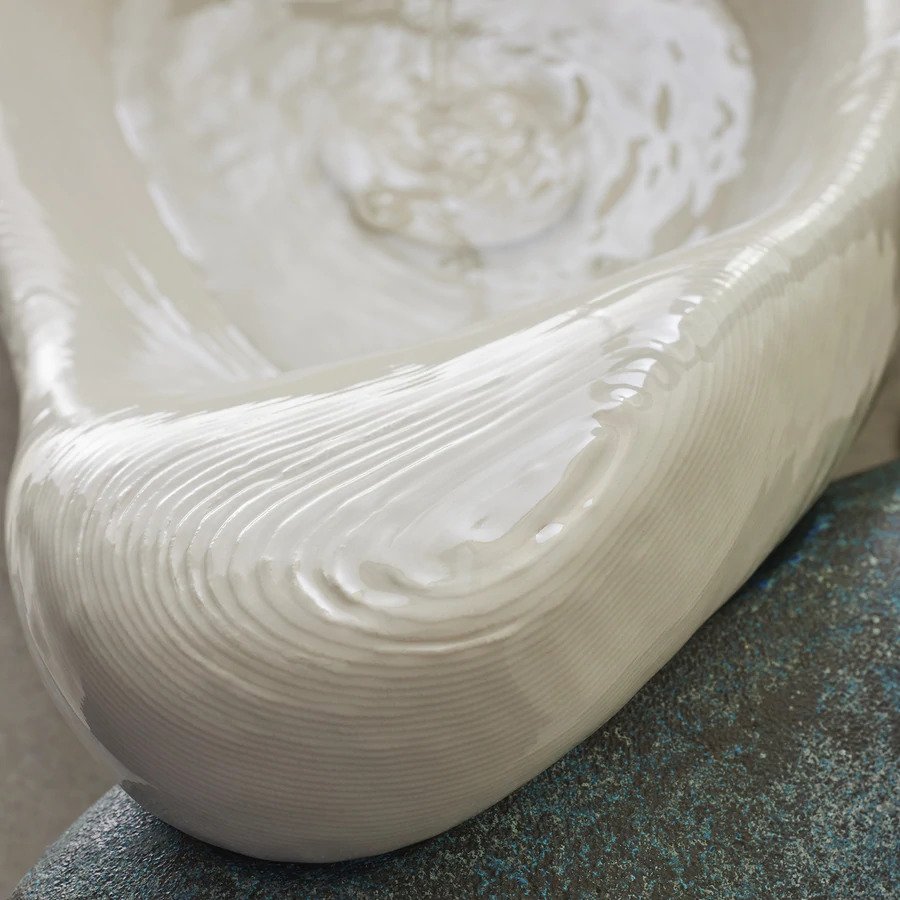While construction 3D printing remains a niche sector, the technology is being increasingly applied to realize novel architectural builds and design concepts. The most recent advances in this area have come from advanced engineering materials group Versarien and manufacturing firm Kohler.
Versarien has leveraged 3D printing to fabricate its “Lunar” lifestyle pods with its own graphene-enhanced cement, Cementene, while Kohler has teamed up with artist Daniel Arsham to design and create a novel “functional high art” sink from 3D printed vitreous china and hand-poured brass.

Versarien’s Lunar lifestyle pod
Versarien’s 3D printed lunar lifestyle pod is the first product made with the firm’s self-developed graphene-enhanced cement, Cementene. The firm claims incorporating graphene into concrete can not only considerably strengthen ordinary concrete but can also enable the faster completion of buildings in order to reduce costs and the carbon footprint of construction processes.
“This launch represents the first application of a technology that has the potential to change the way the world views construction and property renovation,” said Neill Ricketts, CEO of Versarien. “Lunar doesn’t just provide convenience for homeowners, it is also a beacon of hope for those who don’t have access to basic amenities like shelter.”
The Lunar pods are designed with both sustainability and versatility in mind, and can be used as an office, studio, gym or leisure room. The pods have been designed as a proof-of-concept of Versarien’s 3D printable Cementene material and demonstrate the superior levels of detail, flexibility, and precision achievable by 3D printing technology.
“Our 3D printed concrete can build pods for those suffering hardship, whilst creating a circular economy for houses, giving individuals in more developed countries the opportunity to chop and change and ‘lift’ and ‘shift’ their homes,” Ricketts added. “Versarien is driving this innovation and we look forward to seeing the impact this technology can have in the world around us.”
Spanning 3.5 x 2.2 x 2.3 (W,D,H) meters, the Lunar pods contain LED lighting, a digitally-controlled embedded heating system, carbon neutral flooring, and fully-height triple-glazed doors and windows.
The Lunar pods are priced at just shy of £30,000, with those interested in getting their hands on one now able to put down a deposit. According to the website, just 50 build slots are currently available.

Kohler’s 3D printed sink
Working with Arsham, Kohler has designed a limited edition 3D printed sink called the Rock.01 which formed part of the artist’s ‘Stone Flow’ custom installation debuted at the Design Miami fair.
Inspired by organic forms found in nature, the Stone Flow installation features a series of stone-like objects including the Rock.01 sink. The sink was created using a combination of 3D printed vitreous china and hand-poured brass to create a form of “functional high art” that combined Kohler’s 148-year manufacturing legacy and modern-day technologies.
Vitreous china is an enamel coating that is applied to ceramics, particularly porcelain, after they have been fired. Kohler’s method of 3D printing vitreous china is particularly innovative, and made the sink’s complex design possible where traditional methods fell short.
Each 3D printed sink is completely unique and is accompanied by a certificate verifying its authenticity and edition number. A small-batch edition of just 99 sinks is being produced to order by an artisan team at Kohler’s global headquarters in Kohler, Wisconsin.

Novel AM construction applications
In addition to being deployed for the fabrication of homes, schools and other commercial buildings, 3D printing has been leveraged for more niche applications within the construction field.
For instance, construction 3D printing firm Advanced Intelligent Construction Technology (AICT) recently unveiled the world’s first 3D printed public park in Shenzen, China, while Azure Printed Homes is using recycled plastic to 3D print backyard studios, accessory dwelling units and most recently housing developments.
Meanwhile, construction 3D printing firm WASP has pioneered the development of sustainable 3D printed architectures some time, using local earth and natural materials to create its Gaia eco house and TECLA eco-friendly housing model. Also on the note of sustainable architecture, design studio Blast Studio recently developed a new method of 3D printing with fungi to 3D print a two meter high living architectural column.
Elsewhere, additive manufacturing has also been deployed to fabricate a parkour playground in Prague, a rocket launch pad for NASA, and installations demonstrating the possibilities of sustainable design.
Subscribe to the 3D Printing Industry newsletter for the latest news in additive manufacturing. You can also stay connected by following us on Twitter and liking us on Facebook.
Looking for a career in additive manufacturing? Visit 3D Printing Jobs for a selection of roles in the industry.
Subscribe to our YouTube channel for the latest 3D printing video shorts, reviews and webinar replays.
Featured image shows the Kohler Daniel Arsham Rock.01 3D printed sink. Photo via Kohler.



